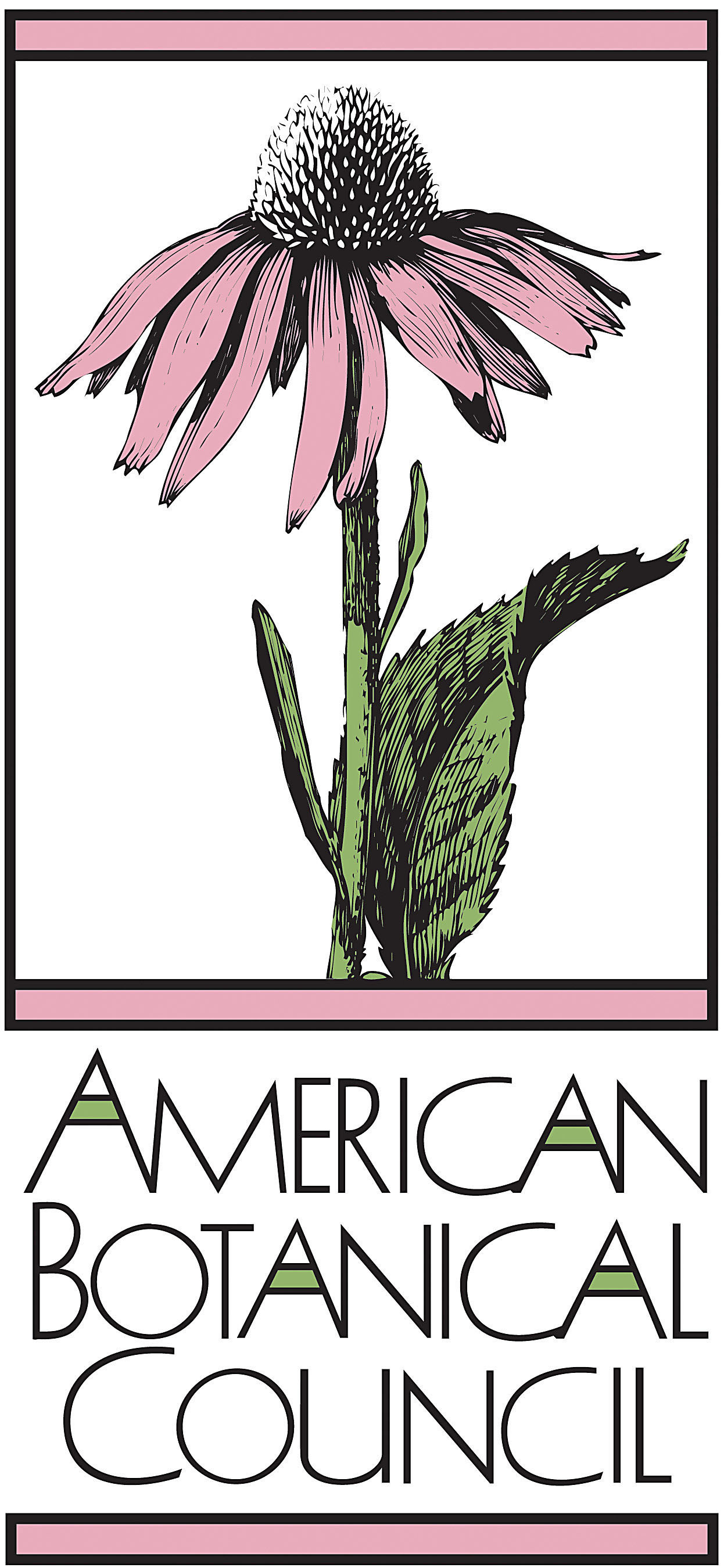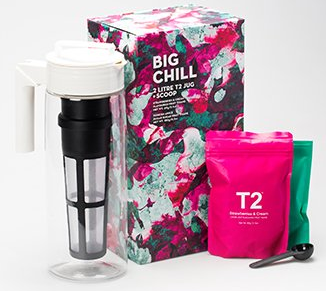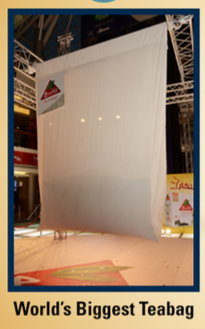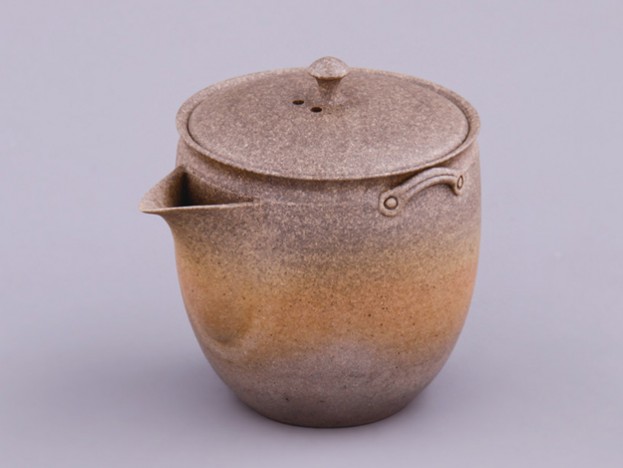What tea professionals need to start the week of Nov. 24, 2014 —
ABC’s terrific tea tally… consider a Confederation of Tea Smallholders… Unilever’s first T2 opens in New York shop…. Guinness awards certificate for biggest tea bag… elegant teapot design updates ancient Chinese masterpieces.
ABC Tea Market Report
Everyone in tea will want to study the American Botanical Council’s newly released Tea Market Report. It is the most thorough analysis of the American tea industry sales by channel I’ve seen. The report, which appears in the November issue of the American Botanical Council’s HerbalEgram, is authored by Sage Group principal Brian Keating and ABC Executive Director Mark Blumenthal with Ash Lindstrom and Mary Ellen Lynch, SPINS director of consumer insights.
 Sales of tea (loosed, bagged, concentrated and herbals) grew by 5.9% in the U.S. in 2013 reaching $1.7 billion while ready-to-drink teas in mass market, natural and specialty gourmet channels remained flat at $2.4 billion compared to 2012. Total RTD sales including convenience are estimated at $5.1 billion in the report which cites a Canadean study predicting RTD tea will grow by 6% to $5.3 billion in 2014.
Sales of tea (loosed, bagged, concentrated and herbals) grew by 5.9% in the U.S. in 2013 reaching $1.7 billion while ready-to-drink teas in mass market, natural and specialty gourmet channels remained flat at $2.4 billion compared to 2012. Total RTD sales including convenience are estimated at $5.1 billion in the report which cites a Canadean study predicting RTD tea will grow by 6% to $5.3 billion in 2014.
The authors predict “a banner year” for both brewed and RTD tea sales in 2014.
The significance of their work is the breadth of sales channels covered. Herbals and medicinal teas are tallied as well as chai and Rooibos. These are important, fast-growing categories that can be difficult to research.
Chai in bags grew 21.4% compared to 2012 across all channels while Rooibos sales are up 3.5% in bags and 11.1% in loose leaf.
ABC’s first tea market report includes 12 tables covering mainstream, multi-outlet, natural and specialty/gourmet channels along with details on niche categories that include organic, Fair Trade teas and non-GMO labels.
“More impressive than the current size of the tea industry is the fact that, for more than a decade, annual sales totals … have grown consistently in the United States with very few types of tea showing anything other than consistent gains,” wrote the authors. “The onslaught of hundreds of new retail tea outlets — and thousands more projected to open in the next few years — parallels the germinal stages of the fledgling US natural foods industry circa 1980-2000.”
A significant advantage to this report is that it brings to light data on the herbal segment. The top selling herbal is chamomile with 2013 sales of $48 million, followed by mint infusions which earned $35 million and ginger which brought in $3.8 million, a distant third. Medicinal tea in bags enjoyed sales of $177 million.
Even packaging is documented with sales in cardboard boxes accounting for $1.1 billion of all tea and canisters grossing $276 million. Conventional packaging is challenged by tea in capsules and pods which saw a 32.8% increase in sales in 2013 to $138 million surpassing packet tea for the first time.
ABC plans to present its 2014 annual tea market report in HerbalGram issue #105 (January-March 2015).
Source: HerbalEgram
A Confederation of Small Growers
Every two years the United Nation’s sponsored Committee on Commodity Problems, under the Food and Agriculture Organization (FAO), takes a close look at tea. This is because the $90 billion tea industry employs close to 15 million people and provides critical trade dollars essential to the stability of several countries. The Intergovernmental Group on Tea (IGG) brings together delegates from all the producing countries. These include government employed agricultural officials, tea board directors, research institute directors, tea association managers and tea executives from the larger brands.
The IGG met in Bandung, Indonesia earlier this month. Climate change, the harmonization of Maximum Residue Levels (MRLs) and the challenges facing tea smallholders were on the agenda along with a discussion on how to increase consumption in producing countries. The group also heard a report on Codex Committee on Pesticides Resident (CCPR) will now recognize and accept that there is an alternative method with scientific merit for establishing MRLs in tea. The CCPR invited tea-producing countries to submit reports containing scientific evidence to establish safe levels of residue in brewed tea.
I will tackle all these topics in the weeks ahead but today the discussion I find intriguing is establishing an International Confederation of Smallholders. Smallholders are the fastest growing group of tea producers accounting for roughly 9 million of the 13 million tea workers and 60% of production. As the colonial model of estates crumbles in many countries smallholders will be responsible for growing most of the world’s tea. In some countries smallholders grow most of the tea, but often account for only a relatively small slice of the high-paying premium teas for export. India, Indonesia, Kenya and Vietnam are all working to improve the skills of smallholders to the point where they can sell direct to Western markets, ideally through cooperatives that provide efficiencies of scale and quality control.
At Bandung this discussion coalesced in a motion to establish an International Confederation of Smallholders identified by a global brand that will help retail customers better understand the contribution made by small tea growers.
The decision may encourage commercial tea brands to inform customers that all or some portion of their product comes from small family-owned gardens.
This is not a cumbersome third-party certification, it simply expands on the idea of traceability and provides an incentive to brands that market to consumers aligned with the idea that smallholders should be encouraged to make better tea.
In China, where 80% of the workers are small holders and only 20% work on estates, the finest teas are produced by smallholders who get top dollar in both the local and overseas market. Once organized as is done in Kenya, this could be a winning model for the world.
Comment below if you think this is a good idea and I’ll start a Linked In group discussion.
Unilever expands T2 to NYC
Last month Unilever opened the first of its Australian-based T2 tea shop on Prince Street in New York’s SoHo. The shop was warmly received and remains busy a month after an opening night party that brought founder and managing director Maryanne Shearer into the limelight of America’s specialty tea scene.
 “I have always felt like T2 and NYC were made for each other,” said Shearer. “My goal is to get more people to drink tea in general, and the way we do tea at T2 is different—we modernize it and make it a fun experience.”
“I have always felt like T2 and NYC were made for each other,” said Shearer. “My goal is to get more people to drink tea in general, and the way we do tea at T2 is different—we modernize it and make it a fun experience.”
New York has witnessed a surge of high-end shops including French Le Palais des Thes’. In April T2 opened a shop in London.
Kevin Havelock, Unilever president for refreshments, said that the company intends to build hundreds of T2 locations, expanding on the 40 in Australia and clearly not limiting its domain to the Asia-Pacific region.
Sales in conventional channels declined for Lipton, Unilever’s top brand, while specialty offerings gain momentum.
Marketers point to the fact that 1.8 billion people will move into the ranks of the middle class by 2020, many in tea drinking cultures. There are also signs of a lessening enthusiasm for coffee shops in Western Europe and renewed expansion of specialty tea shops in France, Poland and Germany.
Source: Unilever
The biggest tea bag ever
The British fittingly held the Guinness World Record for the largest tea bag until last week when an enterprising Arab firm took the prize.
 Rabea Tea, a Saudi brand manufactured by Ahmed Mohamed Saleh Baeshen & Co., created a tea bag weighing 250 kilograms, enough to make 100,000 cups of tea. The bag, held aloft by steel truss, measures 13 feet by 10 feet (four meters in height and three meters width).
Rabea Tea, a Saudi brand manufactured by Ahmed Mohamed Saleh Baeshen & Co., created a tea bag weighing 250 kilograms, enough to make 100,000 cups of tea. The bag, held aloft by steel truss, measures 13 feet by 10 feet (four meters in height and three meters width).
The event coincided with the launch of the company’s full leaf tea bags, which required a decade of research and development.
Once certified in Jeddah the bag began a tour of Saudi cities Riyadh and al-Khobar before the tea was donated to charities.
Source: Saudi Gazette and Rabea Tea
Tea Pottery Inspired by Ancient Chinese Masters
A report in PSFK notes that despite its rich history and cultural significance, Chinese tea culture is being slowly eroded by contemporary culture. Instead of fighting this trend, the Guanfu Museum in China commissioned Jeff Dayu Shi to design a series of nine unique teapots and a highly crafted bamboo chest. Each teapot corresponds to a different tea and method of preparation, all packaged in a way that appeals to younger generations.

All of the pieces incorporate functions and aesthetics perfectly. Color transformations that occur as the result of substance changes during the heat and curing treatment have to be carefully managed by a skilled craftsmen with years of experience. Inside the pots, there is even a beehive structure with tiny sesame-sized openings that enhances the flavor of certain teas by facilitating filtration.
All of these teapots are housed in an expertly-crafted bamboo chest used a traditional Chinese tiered handle case as its inspiration.
Learn more at: www.psfk.com
? ? ?
Tea Biz serves a core audience of beverage professionals in the belief that insightful journalism informs business decision-making. Tea Biz reports what matters along the entire supply chain, emphasizing trustworthy sources and sound market research while discarding fluff and ignoring puffery.
Tea Biz posts are available to use in your company newsletter or website. Purchase reprint and distribution rights for single articles or commission original content. Click here for details.


